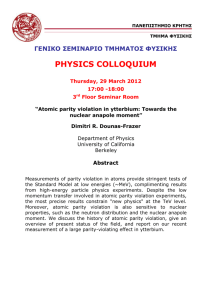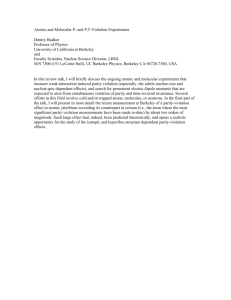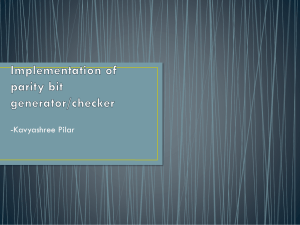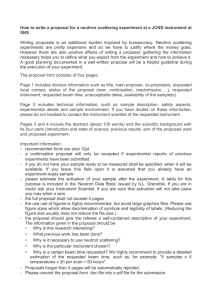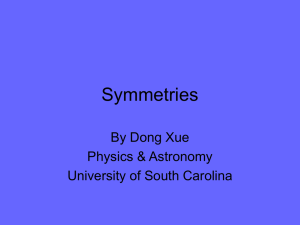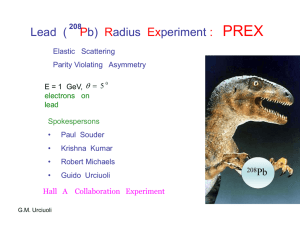WhitepaperSession4
advertisement
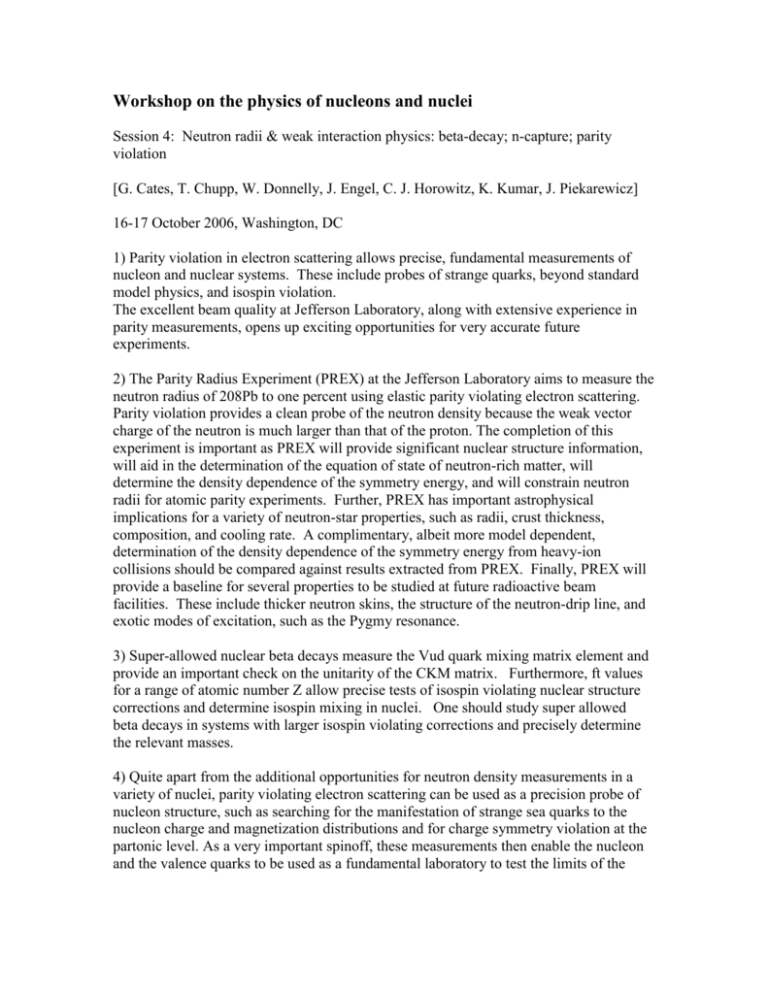
Workshop on the physics of nucleons and nuclei Session 4: Neutron radii & weak interaction physics: beta-decay; n-capture; parity violation [G. Cates, T. Chupp, W. Donnelly, J. Engel, C. J. Horowitz, K. Kumar, J. Piekarewicz] 16-17 October 2006, Washington, DC 1) Parity violation in electron scattering allows precise, fundamental measurements of nucleon and nuclear systems. These include probes of strange quarks, beyond standard model physics, and isospin violation. The excellent beam quality at Jefferson Laboratory, along with extensive experience in parity measurements, opens up exciting opportunities for very accurate future experiments. 2) The Parity Radius Experiment (PREX) at the Jefferson Laboratory aims to measure the neutron radius of 208Pb to one percent using elastic parity violating electron scattering. Parity violation provides a clean probe of the neutron density because the weak vector charge of the neutron is much larger than that of the proton. The completion of this experiment is important as PREX will provide significant nuclear structure information, will aid in the determination of the equation of state of neutron-rich matter, will determine the density dependence of the symmetry energy, and will constrain neutron radii for atomic parity experiments. Further, PREX has important astrophysical implications for a variety of neutron-star properties, such as radii, crust thickness, composition, and cooling rate. A complimentary, albeit more model dependent, determination of the density dependence of the symmetry energy from heavy-ion collisions should be compared against results extracted from PREX. Finally, PREX will provide a baseline for several properties to be studied at future radioactive beam facilities. These include thicker neutron skins, the structure of the neutron-drip line, and exotic modes of excitation, such as the Pygmy resonance. 3) Super-allowed nuclear beta decays measure the Vud quark mixing matrix element and provide an important check on the unitarity of the CKM matrix. Furthermore, ft values for a range of atomic number Z allow precise tests of isospin violating nuclear structure corrections and determine isospin mixing in nuclei. One should study super allowed beta decays in systems with larger isospin violating corrections and precisely determine the relevant masses. 4) Quite apart from the additional opportunities for neutron density measurements in a variety of nuclei, parity violating electron scattering can be used as a precision probe of nucleon structure, such as searching for the manifestation of strange sea quarks to the nucleon charge and magnetization distributions and for charge symmetry violation at the partonic level. As a very important spinoff, these measurements then enable the nucleon and the valence quarks to be used as a fundamental laboratory to test the limits of the electroweak theory. Finally atomic parity experiments can also constrain neutron densities and can measure anapole moments. 5) Parity violation in hadronic systems provides important insight into the structure of nucleons and nuclei. Presently, the large Cesium anapole moment is mysterious given expectations of a small parity violating pion-nucleon coupling. Therefore, it is important to measure the pion coupling in parity violating n+p to d + gamma and to measure anapole moments for other nuclei. 6) Electric dipole moments (EDM) violate CP and provide fundamental insight into beyond standard model physics. This may be associated with the baryon asymmetry of the universe. One should push EDM measurements in neutron and atomic systems along with related nuclear and hadronic structure calculations. This includes measurements in atoms such as radium and radon, which may have enhancements from nuclear octupole deformations. 7) The neutrino response of nuclear matter is important for laboratory neutrino oscillation experiments and in astrophysics. Electron scattering experiments provide important information for the neutrino response. In addition the neutrino axial response may be constrained from the axial response of parity violating electron scattering. Core collapse supernovae involve neutrino interactions over a large range of densities, but perhaps most importantly in low density neutron rich matter near the neutrino sphere. One should explore the properties and modes of excitation of low density neutron rich matter with radioactive beam experiments. This low density neutron rich matter may have new modes of excitation such as the Pygmy resonance.
